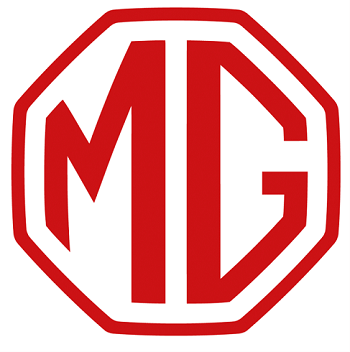What is the full form of MG CarMG Car: Morris GaragesMG stands for Morris Garages. The legendary sports vehicles that made the British automaker 'MG' famous were created by M.G. Car Company Limited, which was founded by Cecil Kimber in the 1920s. In complement to its open two-seater sports cars, among the brand's most well-known models, MG also made sedans & coup�s having engines that could hit three litres in capacity. SAIC Motor Corporation Limited, a government-owned automobile manufacturer in China, is the one who owns the brand. 
MG automobiles had their origins in a 1920s advertising and promotion side business of William Morris' Oxford retail and maintenance facility, Morris Garages. Cecil Kimber, the company's manager, altered Morris Oxfords that were in regular production and affixed MG Super Sports to the plate on the front of the vehicle. In July 1930, a distinct M.G. Car Company Limited was established. Up until July 1st, 1935, Morris owned it personally. Then, he sold it to Morris Motors Limited, his holding company. Over the years, MG's ownership changed a lot. In 1952, Austin and Morris' Nuffield Organization combined to form the British Motor Corporation Limited (BMC). Following the 1967's renaming of its operations as the MG Division of BMC, it became a part of the 1968's merger that gave rise to the British Leyland Motor Corporation (BLMC). British Leyland in the early 2000s, and MG Rover Group, which went into receivership in 2005, were BLMC's successors; they all continued to utilize the MG brand. MG Rover's trademark and other assets were acquired by Nanjing Automobile Group, which in turn amalgamated with SAIC in 2007. In China, the production of MG cars exclusively resumed in 2007. The MG6 was introduced on June 26, 2011, marking the 16-year absence of a new MG model in the UK. The M.G. Car Co.The Oxford representative for William Morris's Morris automobiles was Longwall Street's Morris Garages. The dealership hired Cecil Kimber in 1921 as its sales manager, and in 1922, he was given the opportunity to become a General Manager. Kimber started making his own customized versions of Morris automobiles to boost sales. Although the first vehicles, re-bodied Morris models with bodywork from Carbodies of Coventry & nicknamed "Kimber Specials", featured both Morris and MG logos, there is still debate about when MG automobiles were initially produced. An Oxford newspaper dated November 1923 contains a mention of MG with the octagon badge, and Morris Garages registered the MG Octagon as a trademark on May 1 of the same year. Others contest this and assert that MG didn't actually start trading until 1925. Oxford's Alfred Lane neighbourhood is where Morris Garages built its automobiles. Due to high demand, the Morris Radiator Works moved to bigger quarters on Bainton Road in September 1925. They both shared the same space accordingly. Moving again in 1927 to a different plant on Edmund Road, Cowley, Oxford, close to the main Morris factory, a production line could be added for the first time due to ongoing expansion. The M.G. Car Company was first used in March 1928, when the business had grown sufficiently to deserve a name distinct from the initial Morris Garages. At the London Motor Show in October, a stand was taken for the first time. When room quickly became an issue once more, a quest for a long-term residence resulted in the 1929's lease of a portion of an old leather mill in Abingdon, Oxfordshire. As a result, M.G. Car Corporation, a limited liability company, was established on July 21st, 1930. Kimber worked for the business up till 1941, when he had a disagreement with Morris about finding work for the war effort and was abruptly let off. Kimber, unfortunately, perished in the King's Cross train derailment in February 1945. Under the Nuffield OrganizationWilliam Morris personally controlled MG while it was a part of the Nuffield Organization, and as part of a restructuring of his many personal assets, he sold MG to Morris Motors in 1935. This decision had significant ramifications for MG, especially its involvement in motorsports. Rebadged Wolseley and Morris goods have been added to its product line. With regard to British Motor Corporation (BMC)The British Motor Corporation Limited (BMC), formed in 1952 as a combination of Morris Motors Limited as well as the Austin Motor Company Limited, took control over M.G. Car Company Limited along with Morris. John Thornley, a longtime service manager, was appointed the General Manager who then led the business through its finest years until his retirement. The compact MG sports vehicles were the main exception to the rule under BMC when several MG models merely consisted of rebadged versions of other brands. In September 1966, BMC amalgamated with Jaguar Cars, and in December of the same year, the united business took the name British Motor Holdings (BMH). In order to become British Leyland Motor Corporation (BLMC), BMH and the Leyland Motor Corporation amalgamated in 1968. With regard to British Leyland Motor Corporation (BLMC)The title "M.G. Car Company Limited" stopped being used starting around 1972 because MG was now nothing more than a brand used by BLMC. MG Motor Limited (MG Motor) is a British automotive company owned by SAIC Motor UK, headquartered in London, United Kingdom. However, it operates primarily under the Shanghai-based Chinese state-owned automaker named SAIC Motor.
Next TopicFull Form
|
 For Videos Join Our Youtube Channel: Join Now
For Videos Join Our Youtube Channel: Join Now
Feedback
- Send your Feedback to [email protected]
Help Others, Please Share










